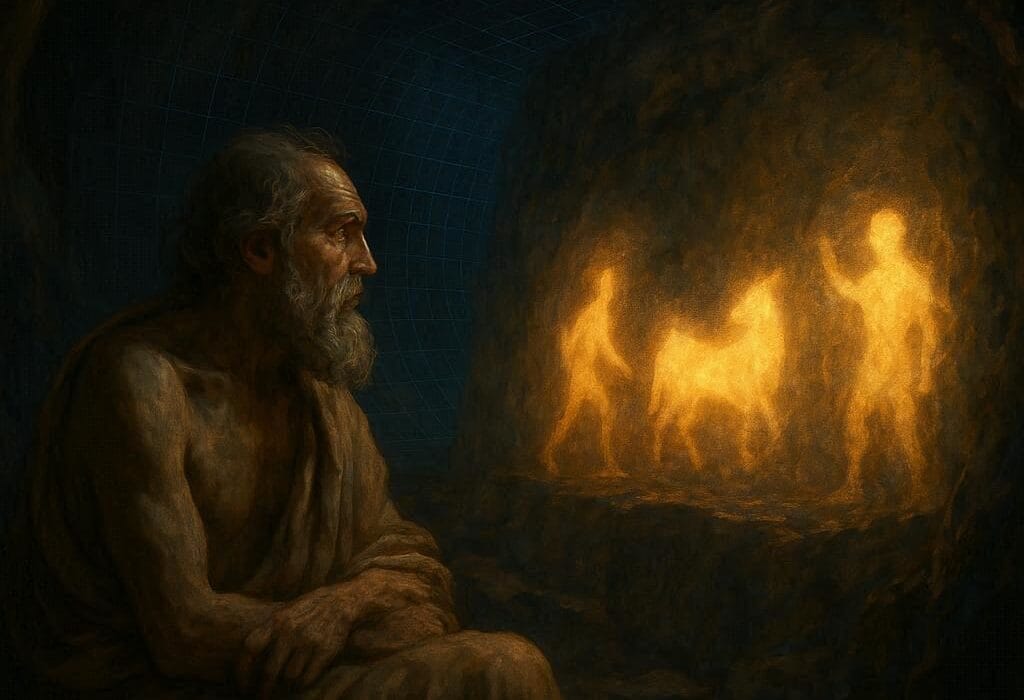Physics is the language of the universe, the science that seeks to decode the fundamental principles behind everything we see, touch, and experience. It explains why stars shine, how atoms bind, why the universe expands, and even what lies at the boundaries of space and time. While physics is as old as human curiosity, it is in the modern era—from the late 19th century onward—that the field has experienced some of its most transformative and astonishing breakthroughs.
These discoveries did not merely add to our knowledge; they reshaped our understanding of reality itself. They revealed a universe stranger, more complex, and far more beautiful than anything we could have imagined. Each discovery came from the relentless pursuit of truth—through genius, persistence, and often sheer luck—and continues to shape the technologies and philosophies of our time.
Let us explore ten of the greatest discoveries in modern physics, discoveries that forever changed our vision of the cosmos.
1. The Discovery of Quantum Mechanics
In the early 20th century, physics faced a crisis. Classical mechanics, which had successfully explained planetary motion and everyday phenomena, failed miserably when applied to the atomic and subatomic worlds. Atoms behaved unpredictably. Light seemed to act both as a wave and as a particle. Electrons refused to follow neat paths around nuclei.
It was out of this chaos that quantum mechanics was born. Max Planck’s work in 1900 introduced the idea that energy is quantized—emitted in discrete packets called “quanta.” Albert Einstein expanded this idea in 1905 by explaining the photoelectric effect, showing that light itself could behave like a particle (later called a photon).
The breakthroughs that followed—Niels Bohr’s atomic model, Werner Heisenberg’s uncertainty principle, Erwin Schrödinger’s wave equation—transformed physics into something new and radical. Quantum mechanics revealed a world governed by probability rather than certainty, where particles exist in multiple states at once until observed.
This discovery did more than solve mysteries of atoms. It laid the foundation for technologies that power modern life: semiconductors, lasers, quantum computers, and even medical imaging. And philosophically, it forced humanity to rethink reality itself, challenging our very notions of determinism and causality.
2. Einstein’s Theory of Relativity
Few discoveries in physics have shaken the foundations of science as profoundly as Albert Einstein’s theories of relativity.
In 1905, his special theory of relativity revolutionized our understanding of space and time. Einstein showed that the speed of light is constant, and as a result, time and space are not fixed but relative to the observer. Concepts like time dilation and length contraction—once unthinkable—became physical realities.
Ten years later, in 1915, Einstein published the general theory of relativity, which redefined gravity not as a force but as the curvature of spacetime caused by mass and energy. This breathtakingly elegant theory explained how planets orbit the sun, how light bends around massive objects, and even predicted the existence of black holes.
Relativity has been tested countless times and proven accurate again and again. Its implications stretch from GPS satellites, which must account for time dilation, to cosmology, where it explains the expanding universe and the very fabric of spacetime.
Einstein’s vision was not just a scientific triumph—it was poetry written in the language of mathematics, revealing a universe stranger and more interconnected than anyone had imagined.
3. The Discovery of the Expanding Universe
For centuries, humans believed the universe was static and eternal. Even Einstein initially resisted the idea of a dynamic cosmos, inserting a “cosmological constant” into his equations to keep it from collapsing or expanding. But in the 1920s, astronomer Edwin Hubble made a discovery that shattered this view forever.
By observing distant galaxies, Hubble found that their light was redshifted—stretched toward longer wavelengths—indicating they were moving away from us. More astonishingly, he discovered that the farther away a galaxy was, the faster it was receding.
This meant the universe itself was expanding. The implications were enormous. If everything is moving apart now, then in the past, everything must have been closer together—leading to the idea of the Big Bang.
The discovery of the expanding universe transformed cosmology into a rigorous science. It opened up questions about the origin, age, and fate of the cosmos. Today, Hubble’s law is a cornerstone of astrophysics, confirmed by countless observations and forming the foundation of modern cosmology.
4. The Unification of Electricity and Magnetism
In the 19th century, electricity and magnetism were seen as separate phenomena. Sparks could light lamps, magnets could attract iron, but no one understood the deeper connection between them. That changed thanks to James Clerk Maxwell.
In the 1860s, Maxwell formulated a set of equations that unified electricity and magnetism into a single elegant theory: electromagnetism. He showed that electric and magnetic fields are not isolated but intertwined, constantly generating each other as they propagate through space.
From his equations emerged an even more revolutionary idea: light itself is an electromagnetic wave. This meant that the glow of the sun, the colors of a rainbow, and the invisible radio waves carrying voices across the world all belong to the same family of phenomena.
Maxwell’s unification was one of the greatest achievements in physics, inspiring future efforts to unify the fundamental forces of nature. It also paved the way for countless technologies: radios, televisions, microwaves, wireless communication, and more.
Through Maxwell’s vision, we realized that electricity and magnetism are two faces of the same universal force, shaping the modern world in ways he could never have imagined.
5. The Discovery of the Electron
The late 19th century was a time of rapid discovery in atomic physics, and one breakthrough changed everything: the discovery of the electron.
In 1897, J.J. Thomson conducted experiments with cathode rays and concluded that these rays were streams of tiny, negatively charged particles—smaller than any atom. He had discovered the electron, the first subatomic particle ever identified.
This discovery was monumental. It proved that atoms, once thought to be indivisible, had internal structure. It opened the door to the development of atomic models, quantum mechanics, and electronics.
Electrons turned out to be the lifeblood of modern technology. They power electricity, form chemical bonds, and serve as the foundation of semiconductors, computers, and nearly every electronic device we use today.
The electron’s discovery was the first step into the subatomic world—a world that would transform physics forever.
6. The Discovery of Nuclear Fission
In 1938, physicists Lise Meitner, Otto Hahn, and Fritz Strassmann stumbled upon a discovery that would change history: nuclear fission. They found that when uranium nuclei were bombarded with neutrons, the nucleus could split into smaller parts, releasing enormous amounts of energy.
This discovery explained the source of energy in nuclear reactions and paved the way for nuclear power—and, tragically, nuclear weapons. During World War II, this knowledge led to the Manhattan Project and the creation of the atomic bomb, unleashing destruction on a scale never before seen.
But nuclear fission also brought hope. It became the foundation of nuclear reactors, providing energy to millions of people worldwide. It helped us understand the processes powering stars, where fusion (the opposite of fission) releases energy that lights the cosmos.
Nuclear fission remains one of the most consequential discoveries of the modern age, a reminder of the dual-edged power of science to both create and destroy.
7. The Discovery of the Higgs Boson
For decades, physicists sought to understand how particles acquire mass. The Standard Model of particle physics—our best framework for understanding fundamental particles—predicted the existence of a mysterious field, the Higgs field, and its associated particle, the Higgs boson.
Without the Higgs field, particles would have no mass, and the universe as we know it could not exist. But for nearly fifty years, the Higgs boson remained hypothetical.
That changed in 2012, when scientists at CERN’s Large Hadron Collider (LHC) finally discovered the Higgs boson. The announcement was greeted with worldwide excitement—it confirmed one of the last missing pieces of the Standard Model.
The discovery of the Higgs boson was not just a triumph of theory but also of technology, requiring the largest and most complex machine ever built. It proved that human ingenuity could unlock secrets hidden deep within the fabric of reality.
8. The Discovery of Gravitational Waves
Albert Einstein’s general relativity predicted them in 1916: gravitational waves, ripples in spacetime caused by massive objects like colliding black holes. For a century, they remained theoretical, too faint to be detected.
Then, in 2015, the Laser Interferometer Gravitational-Wave Observatory (LIGO) made history by directly detecting gravitational waves from two merging black holes. The signal lasted just a fraction of a second, but it confirmed one of Einstein’s most daring predictions.
The discovery opened a new era of astronomy. For the first time, we could “listen” to the universe, detecting cosmic events invisible to traditional telescopes. Gravitational wave astronomy has since revealed colliding neutron stars and black holes, offering glimpses into some of the most violent and mysterious phenomena in the cosmos.
Gravitational waves proved that spacetime itself is not static but dynamic, rippling like a cosmic ocean under the influence of massive events.
9. The Discovery of the Neutrino
In the 1930s, physicists noticed a problem. When atomic nuclei underwent beta decay, energy seemed to disappear. This violated one of the most sacred laws of physics: conservation of energy. To solve the puzzle, Wolfgang Pauli proposed the existence of an invisible particle—the neutrino—that carried away the missing energy.
For years, neutrinos were thought to be undetectable, ghostly particles that pass through matter without interaction. But in 1956, neutrinos were finally observed by Clyde Cowan and Frederick Reines, confirming their existence.
Neutrinos turned out to be among the most abundant particles in the universe. Trillions of them pass through your body every second without leaving a trace. They are crucial to our understanding of nuclear reactions in stars, supernovae, and the evolution of the universe.
Yet neutrinos are still deeply mysterious. They have mass, but incredibly small. They oscillate between different “flavors,” a phenomenon that challenged the Standard Model. The study of neutrinos continues to push the boundaries of physics, hinting at new physics beyond our current theories.
10. The Discovery of Superconductivity
In 1911, Dutch physicist Heike Kamerlingh Onnes made an astonishing discovery. When he cooled mercury to extremely low temperatures, its electrical resistance suddenly vanished. The phenomenon, later named superconductivity, revealed a state where electricity could flow without losing energy.
Superconductivity defied explanation for decades. It wasn’t until the 1950s that John Bardeen, Leon Cooper, and John Schrieffer developed the BCS theory, explaining how electrons pair up at low temperatures to move without resistance.
Superconductivity has since become a cornerstone of modern technology. It enables powerful magnets used in MRI machines, particle accelerators, and maglev trains. Scientists are also searching for “high-temperature superconductors” that could revolutionize energy transmission, making power grids vastly more efficient.
This discovery revealed a hidden realm of matter where physics behaves in extraordinary ways, offering both practical applications and deep insights into the quantum world.
Conclusion
The greatest discoveries in modern physics are more than scientific achievements—they are milestones in humanity’s quest to understand reality itself. Each discovery revealed a universe more mysterious, complex, and awe-inspiring than we imagined. From the counterintuitive world of quantum mechanics to the cosmic grandeur of relativity and gravitational waves, these breakthroughs remind us that physics is not just about equations—it is about wonder.
Modern physics has transformed human civilization. It powers our technologies, guides our exploration of the cosmos, and challenges our deepest assumptions about time, space, and existence. And yet, for all we know, vast mysteries remain unsolved. Perhaps the next great discovery will be even more astonishing, reshaping not only our science but also our vision of what it means to live in this extraordinary universe.






